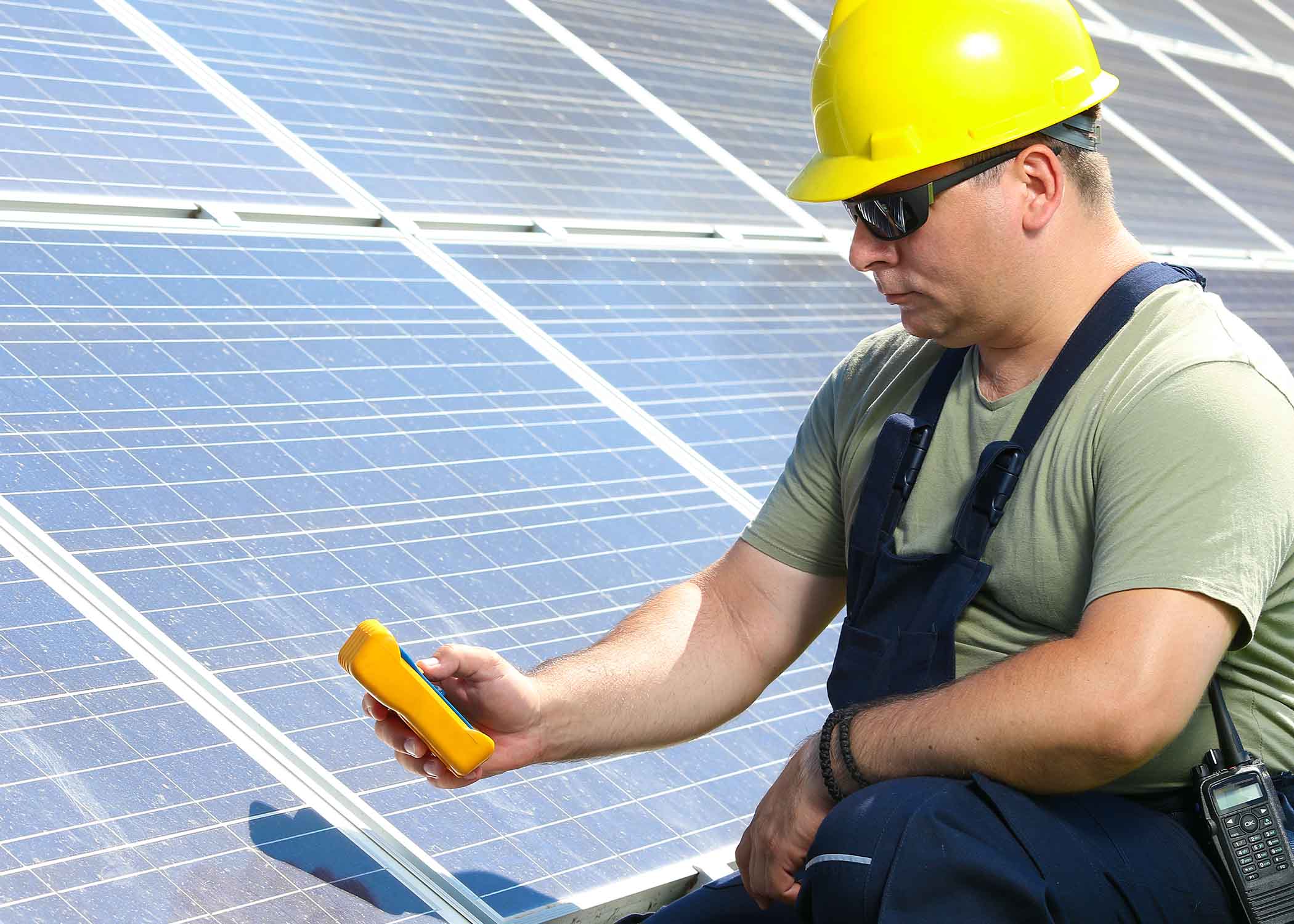Fossil fuels’ downsides are becoming undeniable.
Thankfully, the world’s response is to shift toward sustainable energy and technology.
Every day, scientists and engineers overcome hurdles to power the planet’s buildings and infrastructure entirely with renewable energy sources.
We haven’t begun to explore green technology’s full potential with solar power.
Here’s a glimpse of what the future might look like using the Sun’s energy.
What Is Green Technology?
You’ve undoubtedly heard about environmentally friendly products or services for years.
But it may not always be clear what “green” or “sustainable” means.
What makes something good for the Earth?
Utilizes Sustainable Supply Lines
As we all know, a product doesn’t appear out of thin air.
For a complicated machine or device to operate, it needs to be sourced, assembled, and shipped.
For instance, because modern economies are globalized, many parts and solar panel components are manufactured overseas.
This increases their carbon footprint since shipping by air or sea requires significant fuel.
Preserves Nonrenewable Resources
Many of the items you use every day depend on limited resources.
Petroleum in plastics, coal powering homes, and heavy metals in jewelry are nonrenewable.
While the Earth still contains a lot of metal, each pound we take won’t be replaced anytime soon.
Doesn’t Create Direct Harm
Some products are renewable and locally sourced, but they still cause harm.
Others rely on unsustainable supply chains that exploit cheap laborers.
Others still contain harmful chemicals that pollute the environment.
Anything that directly causes damage to the Earth or harm to people can’t be considered “green.”
Is Solar Power a Green Technology?
Solar power sits in a strange area between sustainable and unsustainable technology.
While sunlight is the world’s most abundant and easily harnessed energy source, devices to collect it are developed through traditional manufacturing processes.
Before calling light energy a green resource, both the supply chain and direct impacts must be addressed.
The photovoltaic cells used in panels contain harmful heavy metals that can leech into water supplies and cause damage to ecosystems.
Many companies source panel materials far away, making the production process carbon positive.
These issues, however, are being addressed.
Since panels are always tightly sealed, they already cause minimal harm.
Many reputable companies are already working feverishly to tackle supply chain issues, understanding that solar is the future of electric power.
What Will Solar Be Like in the Future?
For a long time, the size of solar cells decreased at the rate of computer chips, requiring less space to perform the same functions.
Today, cell dimensions have mostly plateaued, and they aren’t likely to get much smaller anytime soon.
The cost to produce these light-charging cells, however, is plummeting.
And it’s now more affordable than ever before to install a solar system in your home.
In the coming years and decades, low-cost solar energy is likely to change many aspects of modern society.
Redefined Economy
Sunlight energy will be cheap, but it will still take up physical space.
What does this mean for the future of green technology?
It means many things must change.
First, leaders need to take the new industry seriously, providing incentives accordingly.
Once they do this, thousands of workers must devote themselves to building arrays and providing the infrastructure for coming changes.
To combat the adverse effects of climate change, a large percentage of people across the world need to switch away from fossil-fuel power sources.
Governments must provide solar stations and solar-powered grids the same way they now give the citizens nonrenewable energy.
Creative Employment
Most researchers agree that solar energy won’t take much land space.
Only 0.5% of the total space may be needed in the US.
Citizens and power developers can place panels on rooftops or vacant fields in most rural areas.
Cities face more significant challenges.
Since densely populated areas have many residents requiring energy per sunlit area, energy officials and developers will need to come up with creative solutions.
These might be dual-purpose arrays in which panels provide both energy and shelter in some cases.
Already, innovators have proposed using solar roofs or windows to address space constraints.
Competitive Development
Harnessing light is already profitable, but we’ve only seen the beginning.
As photovoltaic cells become cheaper and easier to integrate, tech companies will be more interested in developing innovations to compete with existing ones.
While many companies currently assemble solar products, a select few will probably dominate the future’s green technology market.
Some companies now are likely to be absorbed into market giants, making solar systems more broadly accessible and standardized.
Problem-Solving
No technology is perfect.
Wind turbines, for example, can kill flying birds and create noise some find unpleasant.
Though many find these drawbacks as reasons to avoid green developments, the benefits of all sustainable technologies far outweigh those of destructive coal and gas.
Scientists have already made some exciting calculations, such as considering using the world’s great deserts as enormous solar farms.
There’s not much there, the logic goes, so there would be no harm in setting up an enormous array.
The problem is that a giant farm would change the albedo, or color signature, of the entire area.
This would significantly increase the amount of heat absorbed by the planet, causing unintended environmental consequences.
Though the predictive climate models used to arrive at this conclusion have been troubled, many think giant desert farms could increase local temperatures and precipitation, creating a feedback loop in which global temperatures rise unpredictably.
This change is just one possible side effect of large-scale solar farming.
But there may be an easy solution to the problem — don’t place black panels in places where they dramatically change the color signature of the Earth.
We can’t know all of the changes until things are much further along.
Scientists, corporations, and governments must find inventive ways to limit harmful impacts.
Integration with Electric Vehicles
Both vehicles and residential homes create a considerable amount of fossil fuel pollution.
For a vehicle or home power system to be a truly green technology, both need to operate independently of the power grid.
Some gas stations already have charging stations, and future charging will run on solar power.
While the world will make renewable power a public utility, charging stations will be commonplace well before that.
Small-scale implementations have already begun.
Electric vehicles will better compete with classic cars and trucks when charging options become more widespread.
Because residents in remote areas often need to travel many miles per day, they need to charge their vehicles.
Even those living in big cities occasionally need to drive long distances.
During holidays or vacations, people often drive hundreds of miles.
With public charging stations worldwide, people will be more likely to purchase electric vehicles over traditional ones.
Social Equality
Energy availability is a social issue.
Besides critical services such as heating, cooling, and water filtration, energy provides access to education, emergency services, career opportunities, and social networks.
Though energy access is expensive and otherwise taxing for many developing governments, a solar revolution may reverse this.
When citizens of low-income, low-GDP countries gain access to unlimited energy, they may be able to choose their lifestyles better.
Luckily, this could have an environmental ripple effect as citizens stop relying on environmentally destructive measures such as rainforest clearing to earn income.
Solar Agriculture
Farmers, especially those raising cattle, have gotten some bad press.
Both farm operations and transportation are energy-intensive.
Many US farms have struggled to remain financially viable while meeting consumer demands for sustainability.
Solar implementation helps farmers reduce energy costs while appealing to discerning consumers.
Large installations have benefits for crops as well.
Shade-dependent and shade-tolerant crops, such as swiss chard, wheat, tomatoes, and potatoes, grow well beneath power canopies.
This allows farmers to double their land usage and tap unrealized benefits.
Water-Borne Arrays
Earth has plenty of space for photovoltaic panels.
But this land is filled with plants that use the same energy.
Wherever dual-use panels aren’t practical, farmers and governments may prefer to float them instead.
While this might sound impractical, it’s already being done successfully in many places.
Fish farms benefit from water-borne arrays, as the equipment they use to oxygenate the water uses a lot of energy, leading to higher costs.
Floating renewable arrays avoid the costs of fueling oxygenation equipment.
This makes fish farms more sustainable.
Floating setups aren’t ideal for ponds and sensitive wildlife habitats since they block light or heat surrounding water.
They may also leech internal material if damaged.
Since farms connected to large bodies of water don’t have to worry about these problems, they commonly use floating solar systems.
Also, wastewater facilities use floating arrays since they manage degraded water systems.
How Will Solar Cells Change?
Green technology’s future depends on our ability to adapt light-gathering cells to different uses.
Currently, solar panels are relatively thin, but they still require materials to produce.
This is both expensive and taxing on supply lines.
Modern silicon cells are also passive, receiving maximum light energy only when the Sun is at an optimal angle.
Scientists hope to address both problems.
Light Efficiency
Since the electronics inside panels aren’t likely to yield much greater efficiency, forward-thinking researchers have proposed integrating electronics that track the Sun as it moves across the sky.
This would catch more photons to transform light into energy.
Others have proposed multilayer films that use backup layers to catch photons the outer layers missed.
To further improve panels’ performance, developers could incorporate solutions like using mirrors to channel extra light.
Cost
To reduce the amount of material needed to convert light into usable energy, some scientists are researching ways to use super-thin — and therefore super-cheap — cells that could be added to various futuristic collection devices.
This research is still in its infancy, but it’s progressing quickly.
Material
Another significant change that may be coming to the solar market is the material used to gather light.
Silicon is currently ubiquitous, but it may not be the perfect material.
Though it is the first material, it’s relatively expensive and inefficient.
We can only speculate on what other materials might succeed silicon, but perovskite and organic, plant-based cells already look promising.
Since nature has long solved the problem of gathering energy from the Sun, a better understanding of plants may be the key.
Join the Future of Green Technology
As the most widespread green technology in current use, solar power can offer the world hope.
Though we’re only beginning to understand its potential, solar is a smart choice for homeowners or agriculturalists.
To learn more about your options, visit Unbound Solar online today!



